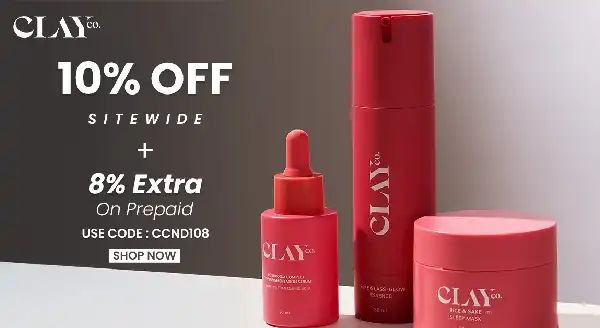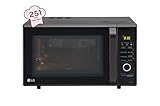How To Choose The Best Air Cooler For Your Home: Tank Size, Power And Room Match
This guide breaks down the essentials of buying an air coller - tank size, power, and room fit - so you can make a choice that lasts.

Air Cooler Buying Guide: Know All About The Required Tank Size, Power And Room Fit.
Finding the right way to keep indoor spaces comfortable often feels like solving a puzzle. Fans circulate air but rarely provide relief when the climate turns harsh. Air conditioners deliver quick results but weigh heavily on both wallet and electricity bills. Air coolers step neatly into that middle space, affordable, energy-conscious, and designed for everyday living.
But walking into a shop or scrolling through online catalogues can be confusing. Desert, personal, tower features like auto-fill, remote controls, and inverter compatibility only add to the chaos. Which features are genuinely useful, and which are just fancy distractions? When choosing an air cooler, consider tank size, power, and room match to ensure efficient and effective cooling for your home.

Air coolers have quietly become a household essential. But choosing the right one is not as easy as picking the biggest model in sight; Photo Credit: Pexels
What Really Matters When Choosing A Cooler
1. Tank Size – The Heart of the Cooler
The size of the water tank directly affects how convenient the cooler feels in daily use. A smaller tank may need frequent refilling, while a larger one can run for hours without interruption. For compact bedrooms, a 20–30 litre tank is usually sufficient. For living rooms or shared spaces, 50–70 litres often makes life easier.
More water doesn't always mean better, though. A large tank adds weight, making the unit harder to move around. A practical solution is to look for coolers with water-level indicators or auto-fill options. These features save you the trouble of guessing or running to refill mid-use. It's about matching tank size with the rhythm of your space, not just going for the biggest number.
2. Power and Air Delivery – Cooling That Packs a Punch
A cooler's effectiveness depends on how much air it can deliver across the room. This is measured in cubic metres per hour (CMH). A higher CMH rating means stronger airflow and better coverage. For bedrooms, 2,000–3,000 CMH works well. For larger areas, look for 4,000 CMH or more.
Air throw distance is equally important. A cooler with poor air throw may feel effective only if you sit right in front of it. Ideally, choose one with at least 20–25 feet of throw for smaller rooms and 30–40 feet for bigger spaces. Motor power also matters, 100–150 watts generally suits bedrooms, while 200 watts or more is better for halls or open areas.
Also Read: Which Budget Air Cooler Is Best For Small Rooms, Checkout These Options
3. Room Size – Matching Cooler to Space
Coolers aren't one-size-fits-all. A powerful desert cooler in a tiny study room is unnecessary, while a compact personal cooler will struggle in a large hall. The goal is to match airflow capacity to room size.
As a guide, the cooler should be able to circulate the entire room's air volume within two minutes. For a 150 sq. ft. room, this translates to a cooler delivering around 2,000–3,000 CMH. Placement also matters, keep the unit near an open window or door to draw in fresh air. Without this, even the most powerful cooler can feel stuffy.
4. Type of Cooler – Desert or Personal?
The choice between desert and personal coolers often confuses buyers. Desert coolers are larger, more powerful, and built for open or semi-open spaces. They use more water but can handle bigger areas with ease. Personal coolers, on the other hand, are compact, portable, and consume less power, perfect for bedrooms, offices, or study corners.
It's not about one being superior to the other. The right choice depends on where and how you plan to use it. For flats with smaller rooms, personal coolers usually do the job. For larger houses, community halls, or verandas, desert coolers provide wider coverage and stronger airflow.

Air cooler buying guide: From tank size to motor power, we explore what to look for before bringing one home; Photo Credit: Pexels
5. Cooling Pads – The Unsung Heroes
Inside every cooler are pads that absorb water and allow air to pass through, lowering the temperature. The two common types are honeycomb and aspen. Honeycomb pads, named for their hexagonal pattern, are durable, efficient, and need less frequent replacement. Aspen pads are cheaper but require more maintenance and regular changes.
While honeycomb pads may cost a bit more initially, they save time and hassle in the long run. For those who prefer low-maintenance appliances, they're often worth the investment. Aspen pads, however, are still a practical choice for budget-conscious buyers who don't mind seasonal upkeep.
6. Power Consumption – Saving ₹ and Energy
One of the biggest reasons people turn to air coolers is energy efficiency. Compared to ACs, coolers consume far less electricity, making them easier on monthly bills. Still, the wattage varies from model to model.
Personal coolers usually consume 100–150 watts per hour, while desert coolers can go up to 300 watts. Over regular use, that difference adds up. Inverter-compatible coolers are even more efficient, ensuring the unit keeps running smoothly during power cuts without straining the backup supply. A little attention to energy consumption can translate into noticeable savings, sometimes enough to cover the cost of another appliance in the long run.
7. Mobility and Portability – Wheels Make Life Easier
Coolers are often shared between rooms, whether it's for family gatherings, meals, or quiet evenings. Portability plays a big role in convenience. Units with caster wheels and lightweight frames are easier to move. Some models even come with detachable tanks or handles for hassle-free shifting.
If stairs are part of daily life, portability becomes even more important. A massive desert cooler may deliver power but can be cumbersome to relocate. For compact apartments, slimmer tower-style personal coolers slide neatly into corners and can be wheeled around effortlessly. Think about your home layout before deciding.

Air Cooler Buying Guide: Tank Size, Power And Room Fit; Photo Credit: Pexels
8. Noise Levels – Comfort Isn't Just Cooling
A cooler that hums softly in the background can be relaxing. One that roars loudly is distracting, especially in bedrooms or study rooms. Noise levels vary depending on motor design and fan type. Blower fans are usually quieter than large axial fans, though airflow patterns may differ.
Some brands market “silent” or “low-noise” models, but it's wise to test them in-store or check reviews. Comfort isn't only about cooling, it's also about creating a pleasant environment without background disturbance.
9. Maintenance – The Long Game
Air coolers last longer and work better when maintained regularly. Tanks should be drained and cleaned to prevent scaling or unpleasant odours. Pads should be replaced every season or two, depending on usage. Fans and motors occasionally need servicing.
Modern models often come with drain plugs, anti-bacterial tank coatings, or easy-access panels for quick cleaning. These features reduce hassle and extend life. It's also worth considering after-sales support and availability of spare parts. A well-supported brand ensures your cooler doesn't turn into an annual headache.
10. Price and Value – Striking the Balance
Air coolers are available across a wide price spectrum. Entry-level personal coolers start at around ₹5,000–₹7,000. Mid-range models with larger tanks or honeycomb pads fall between ₹8,000–₹12,000. High-capacity desert coolers can go up to ₹18,000 or more.
But the sticker price isn't the full story. A slightly more expensive model with durable pads, efficient power use, and reliable service can save significant money and effort over years. Choosing based purely on price can lead to frequent repairs or dissatisfaction. A better approach is to weigh value over time, sometimes stretching the budget a little upfront pays back many times later.
Products Related To This Article
1. hifresh Personal Air Cooler for Home
2. Bajaj PX97 Torque New 36L Personal Air Cooler For Home
3. Symphony Diet 12T Personal Tower Air Cooler for Home with Honeycomb Pad
4. Crompton Ozone 75 Litres Desert Air Cooler for home
5. CUCKOO Respure Copper Air Purifier For Home
An air cooler may look simple, but the decision to buy one is layered with details. Tank size, power, and room fit are the backbone of the choice, while features like portability, noise, and maintenance define day-to-day comfort.
The right cooler doesn't just move air, it complements your space, routine, and budget. Whether it's for quiet study hours, family gatherings, or peaceful nights, choosing thoughtfully ensures comfort without compromise. With a little planning, your cooler becomes more than a machine; it becomes a steady companion that keeps life easier, fresher, and more relaxed. Get your hands on an affordable air cooler online.
Disclaimer: The images used in this article are for illustration purposes only. They may not be an exact representation of the products, categories, and brands listed in this article.
























